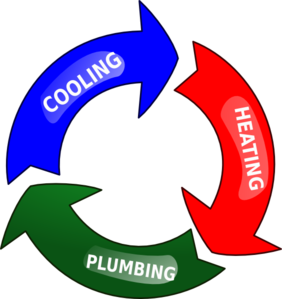If you have a traditional water heater, you may encounter situations where the pilot light goes out and needs to be relit. Understanding how to safely and effectively relight the pilot light is essential for adequately functioning your water heater. This comprehensive guide will walk you through lighting a pilot light on a water heater, the different types of pilot lights, and troubleshooting common issues. So, let’s dive in and learn how to keep your water heater running smoothly.
Understanding the Different Types of Pilot Lights
Before we get into lighting a pilot light, it’s essential to understand the different types of pilot lights that may be present in your water heater. Older models often rely on a standing pilot light, a constant flame used to ignite natural Gas when the unit needs to heat water. However, newer models utilize alternative ignition systems such as intermittent pilots, direct-spark ignition, or hot-surface ignition.
Intermittent Pilot:
This type of pilot light operates similarly to a standing pilot but is only lit when the water heater needs to heat water. The flame automatically ignites when necessary and extinguishes after the heating cycle is complete.
Direct-Spark Ignition:
Unlike pilot-based systems, direct-spark ignition uses a spark to ignite the Gas. This ignition system is similar to the spark used in gas barbecues or when lighting a standing pilot light.
Hot-Surface Ignition:
Hot-surface ignition employs a thin metal probe that becomes hot when electricity flows through it. The probe’s heat instantly ignites the Gas flowing over it, eliminating the need for a pilot flame.
Understanding the Components of a Pilot Light
To effectively troubleshoot and relight your pilot light, it’s essential to familiarize yourself with its various components. Let’s take a closer look at these components:
Gas Control Knob and Electric Igniter Button: Located near the bottom of the water heater or inside an access panel, these controls are essential for lighting the pilot light.
Pilot Tube and Thermocouple: You’ll find the pilot tube and thermocouple inside the area where the pilot flame should be. The Gas is supplied by the pilot tube with a small amount of Gas to light and maintains the pilot flame, while the thermocouple is a safety feature that detects if the pilot has lit.
Step-by-Step Guide to Lighting the Pilot Light
Now that we have a basic understanding of the different types of pilot lights and the components involved let’s walk through the step-by-step process of lighting a pilot light on a water heater.
Turn Off the Gas Control Knob: Before attempting to relight the pilot light, ensure that the gas control knob is in the “Off” position. Wait for at least five minutes to allow any residual gas to dissipate.
Switch the Knob to the “Pilot” Setting: After the waiting period, turn the gas control knob to the “Pilot” setting. Simultaneously, press and hold the Knob as far as it goes to open the pilot tube and enable gas flow.
Ignite the Pilot Flame: While holding the control knob, use your other hand to press the igniter button repeatedly. Look for a tiny spark with each press. If no spark is visible, you can manually light the pilot flame with matches or a long-handled lighter.
Keep the Control Knob Depressed: Once the pilot flame is lit, depress the control knob for approximately 30 seconds to allow the thermocouple to heat up.
Release the Control Knob: After 30 seconds, release the control knob and observe if the pilot flame stays lit. If it goes out, repeat the process by turning the Knob to “Off,” waiting for five minutes, and attempting to relight it again.
Adjust the Temperature Setting: If the pilot flame remains lit, turn the gas control knob to the desired heat setting. We are setting the water heater temperature between 120 and 140 degrees Fahrenheit.
Note: Maintaining the water heater temperature within this range is crucial. Temperatures below 120 degrees can allow harmful bacteria to grow, while temperatures above 140 degrees can scald you.
Troubleshooting Common Issues
Even after relighting, you may encounter difficulties getting the pilot light to stay lit. Let’s explore some common issues and their possible solutions:
Clogged Pilot Tube: Over time, dust and debris can clog the tube, preventing gas flow and hindering the pilot light from igniting. To resolve this, use a needle or thin metal wire to clean the tube gently.
Dirty Thermocouple: A dirty thermocouple can disrupt its ability to detect the pilot flame and cause it to go out. Carefully clean the thermocouple with fine-grit sandpaper. If you’re unsure, consult a professional to avoid damaging the thermocouple.
Bent Thermocouple Probe: If the thermocouple probe becomes bent, it may not detect the flame and result in an extinguished pilot light. Ensure the probe is in contact with the flame and adjust it if necessary.
Worn-out Thermocouples: They can wear out over time and lose their effectiveness. If cleaning and adjusting the thermocouple does not resolve the issue, it may need to be replaced by a professional plumber.
Faulty Pilot Control: Sometimes, the pilot control may malfunction. Once you have checked the above and the pilot light is still unlit, replacing the entire control unit may be necessary. Seeking professional help is recommended in such situations.
Conclusion
Knowing how to safely and effectively light a pilot on a water heater is essential for maintaining its optimal functionality. By understanding the different types of pilot lights and the components involved, you can troubleshoot common issues and keep your water heater running effectively. Remember to follow the step-by-step guide and prioritize safety throughout the process. In case of persistent difficulties, it’s always advisable to consult a professional plumber or HVAC Repair Company. With this comprehensive guide, you can now handle pilot light issues and ensure a continuous hot water supply in your home.
How to Light a Pilot Light on a Water Heater | Blog Article | Hannah’s Heating and Air | All Rights Reserved | Inman SC
